Complete Solutions to Example of chapter FRICTION of Class 11 book with complete answers and questions
| Class 11 | PHYSICS |
| Chapter | FRICTION |
| CP SINGH | Example |
| Number Of Questions | 42 |
| Academic Year | 2023-24 |
A block of mass ` 2 kg` is given velocity `10 m//s` on a rough horizontal surface of friction coefficent`mu = 0.2`. Find the magnitude and the direction of friction force acting on it. After how much time and at what distance it will stop ?
07:36View SolutionFind tension /tensions in the string/strings in the following cases:
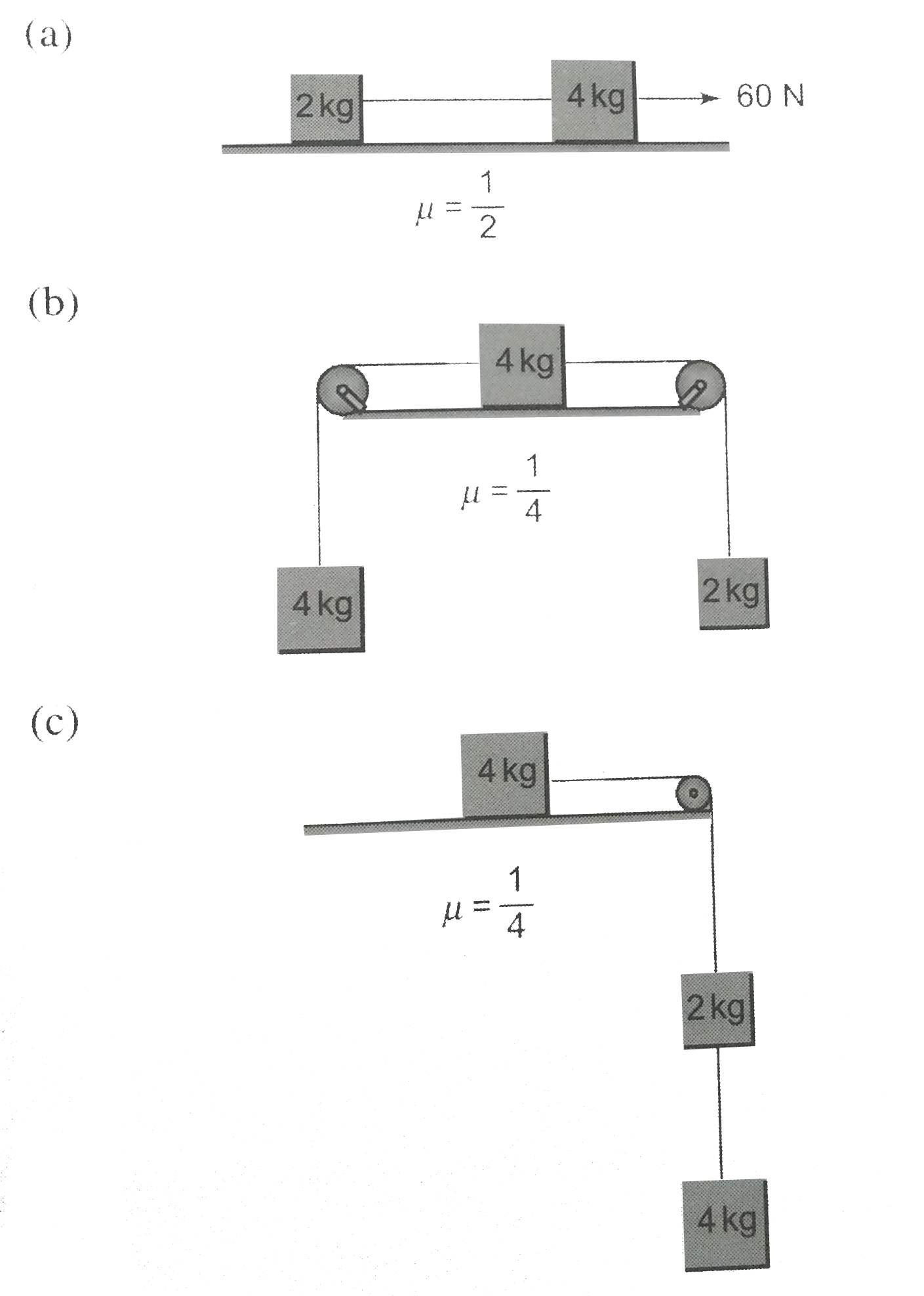 20:39View Solution
20:39View Solution(a) A block slides down an incline of angle `45^(@)` with an acceleration `(g)/(2 sqrt(2))`. Find the friction coefficient.
(b) A block slides down at `45^(@)` inclined plane in twice the time it takes to slide down a smooth `45^(@)` incline. What is friction co-efficient between the block and the incline?
( c) A block slides down on a rough inclined plane of inclination `30^(@)` with constant velocity. If this block is projected up the plane with a velocity of `10 m//s`, then at what distance along the inclined plane , the block will come to rest?
(d) A body is launched up on a rough inclined plane of inclination `theta`. If time of ascent is half of time of descent, find the friction coefficient.25:18View SolutionA body slides down on an inclined plane of inclination `37^(@)` with horizontal. The distance travelled by the body in time `t` is given by `s = t^(2)`. Find the friction coefficient between the body and the incline.
05:35View SolutionIn the following problems the air resistance is constant (air resistance always opposes the motion).
(a) A ball is thrown vertically upward. If time of ascent is `t_(1)` and time of descent is `t_(2)`, which time is greater ?
(b) A ball is thrown vertically upward with speed `u` and on returning to the ground, its speed is `v_(0)`. Which speed is greater ?
(c) Two balls `A` and `B (m_(A) gt m_(B))` are thrown vertically upward with same speed. Which ball `A` or `B` (heavier or lighter) wil attain greater height ?15:03View Solution(a) A ball is thrown vertically upward with speed `10 m//s` and it returns to the ground with speed `8 m//s`. Find the maximum height attained by the ball.
(b) A ball is thrown vertically upward and if air resistance is half of weight of the ball, find the ratio of time of ascent and time of descent.
(C) Two balls `A` and `B (m_(A) = 2 m_(B) = 2 m)` are thrown vertically upward. If air resistance is `mg//2`, find ratio of maximum height attained by them.16:40View SolutionIn the following problems, string is light, pulleys are smooth and massless.
(a) find the acceleration of each block and tension in the string.
(b) If tension in the string is `15 N` and acceleration of each block is `1 m//s^(2)`, find the value of friction coefficients `mu_(1)` and `mu_(2).
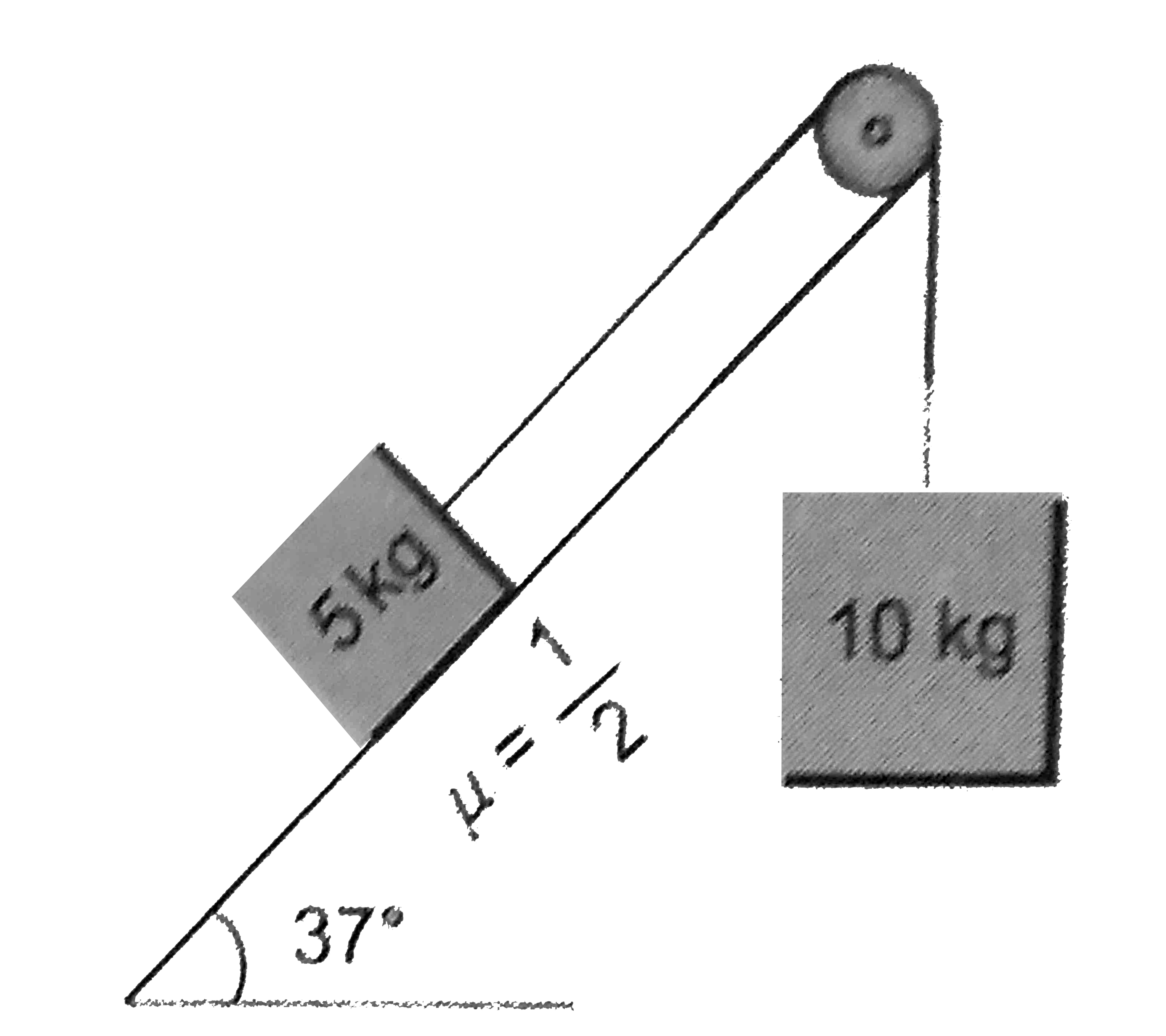
 11:02View Solution
11:02View SolutionFind the friction on the block in the following cases :
(a)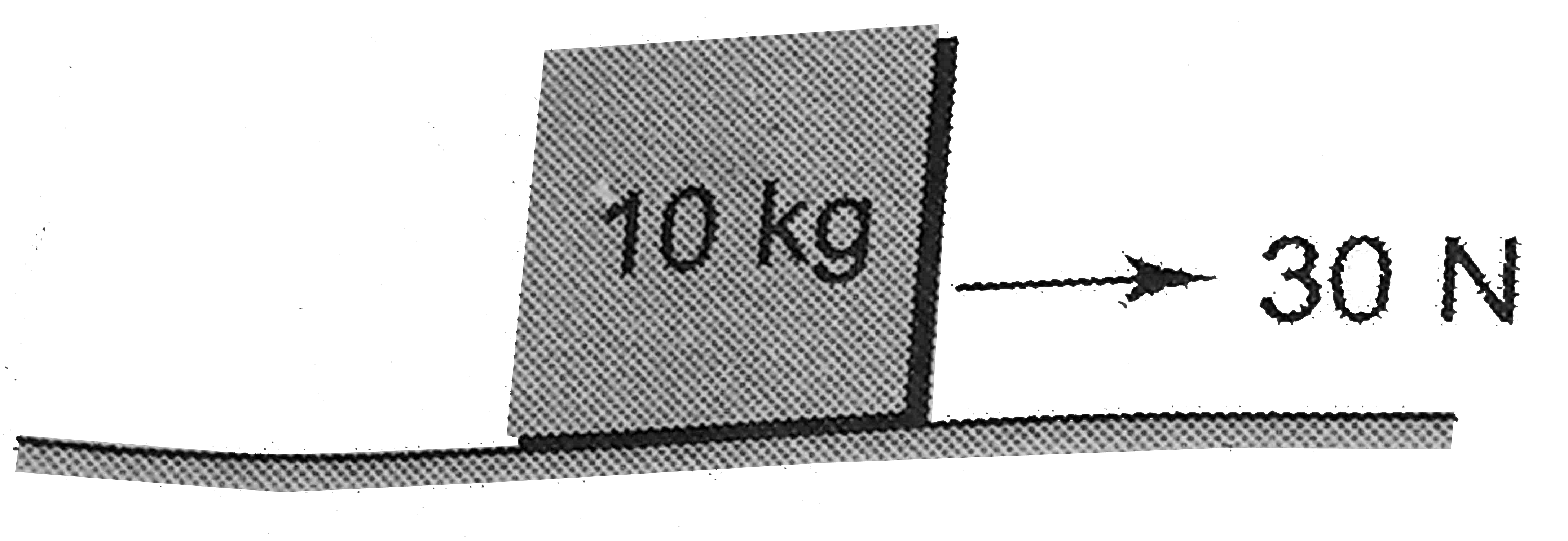 (b)
(b) 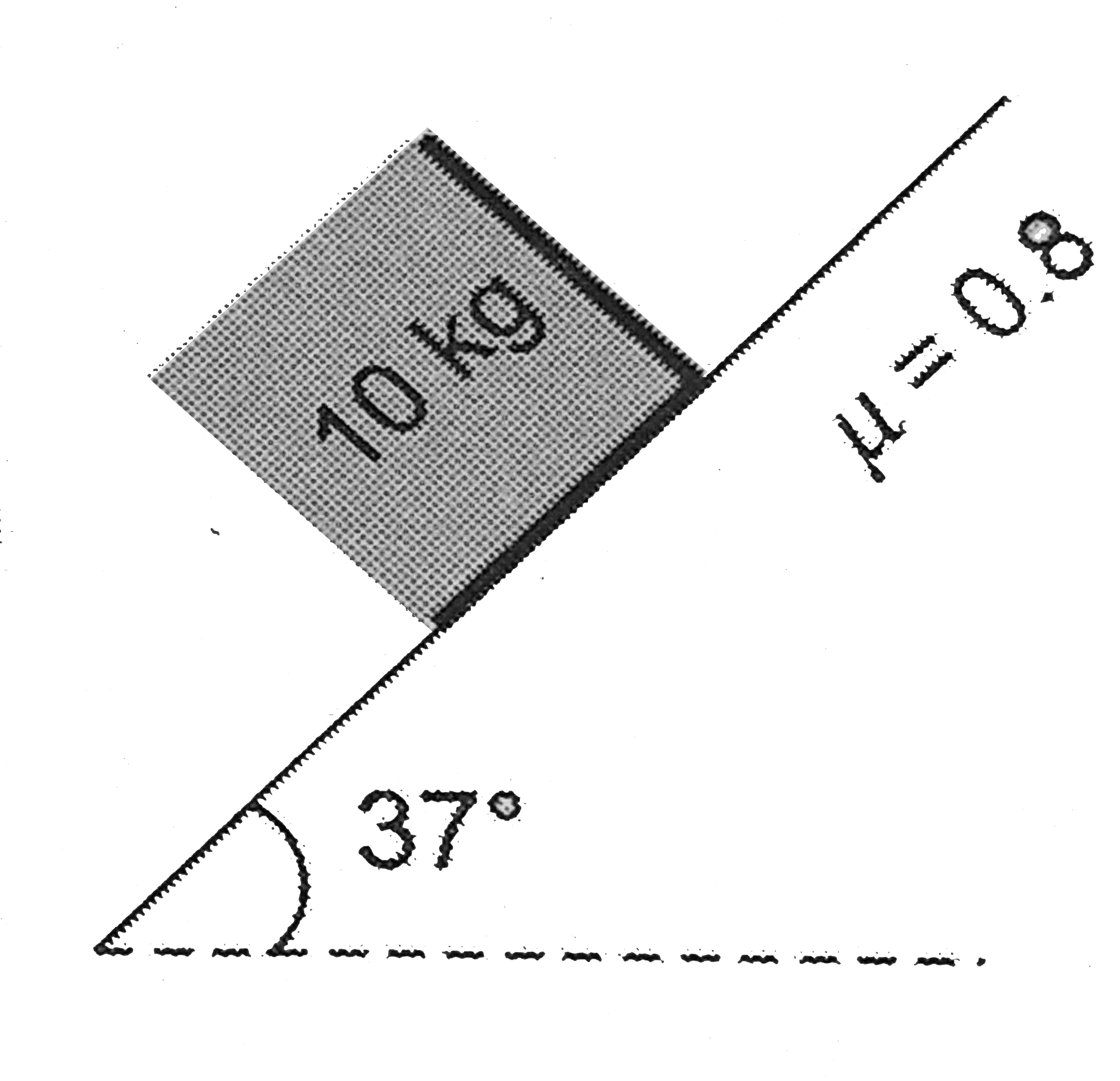
(c )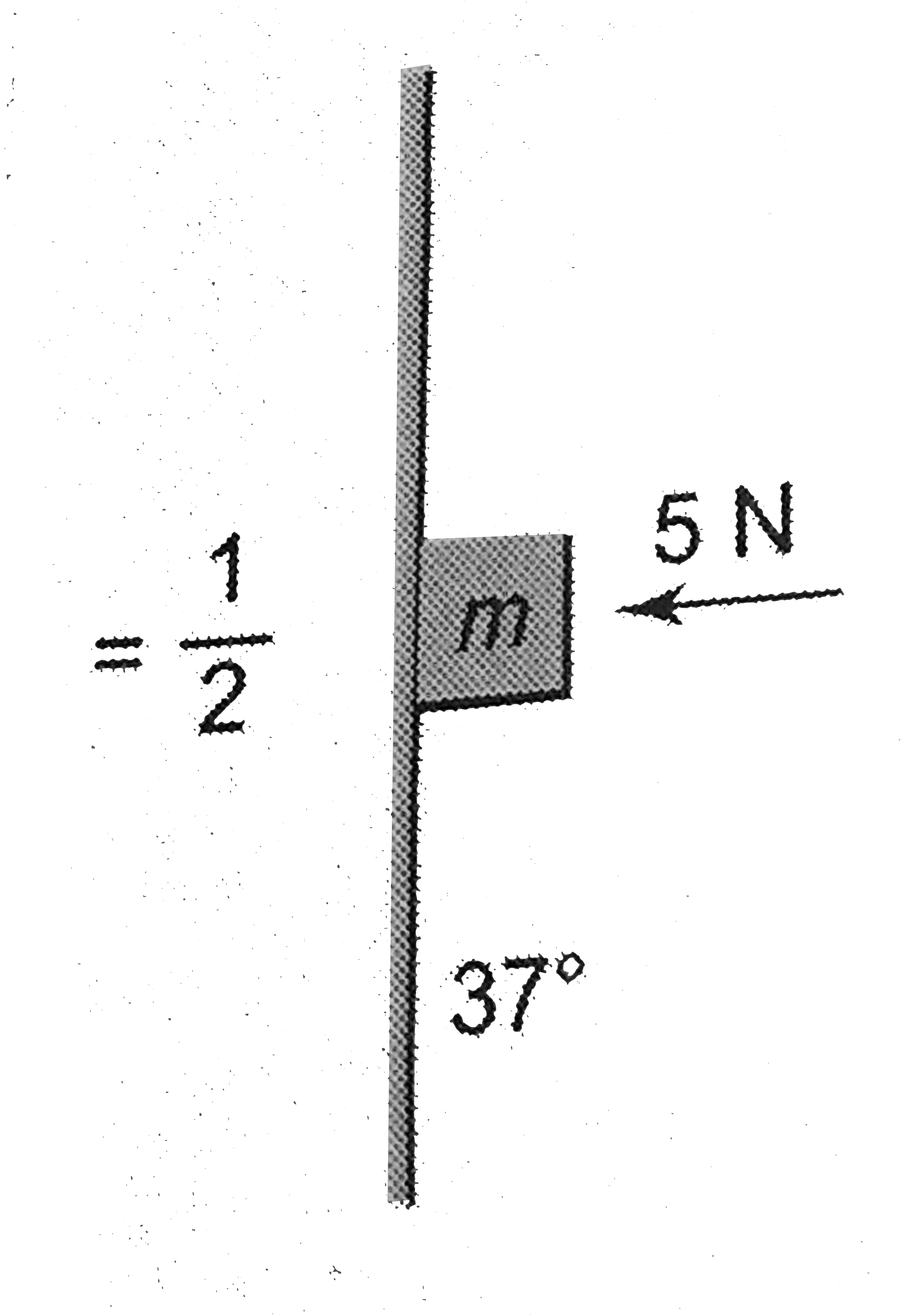 If (i) `m = 0.1 kg` and (ii) `m = 1 kg`
If (i) `m = 0.1 kg` and (ii) `m = 1 kg`
(d)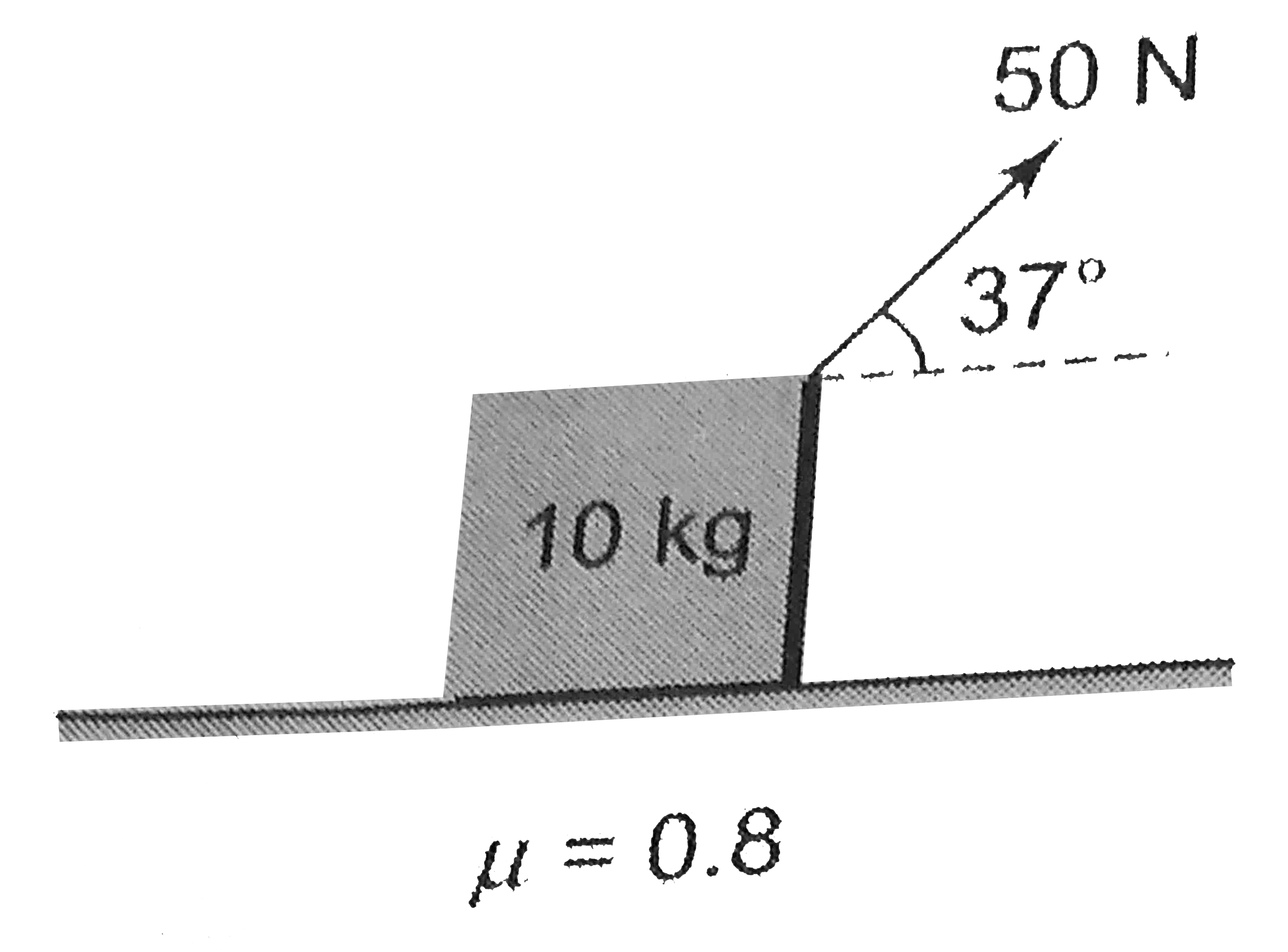
(e)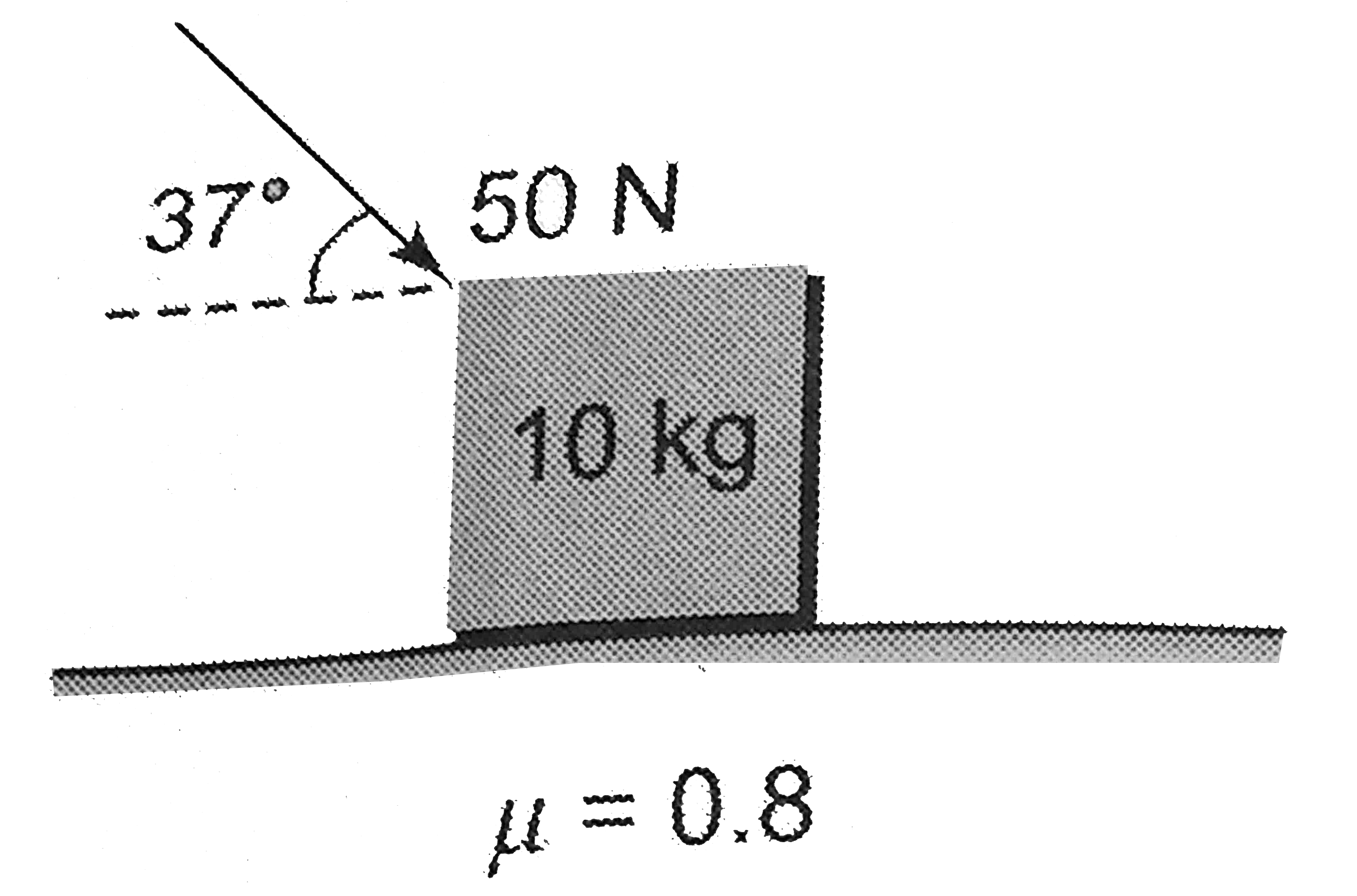
(f)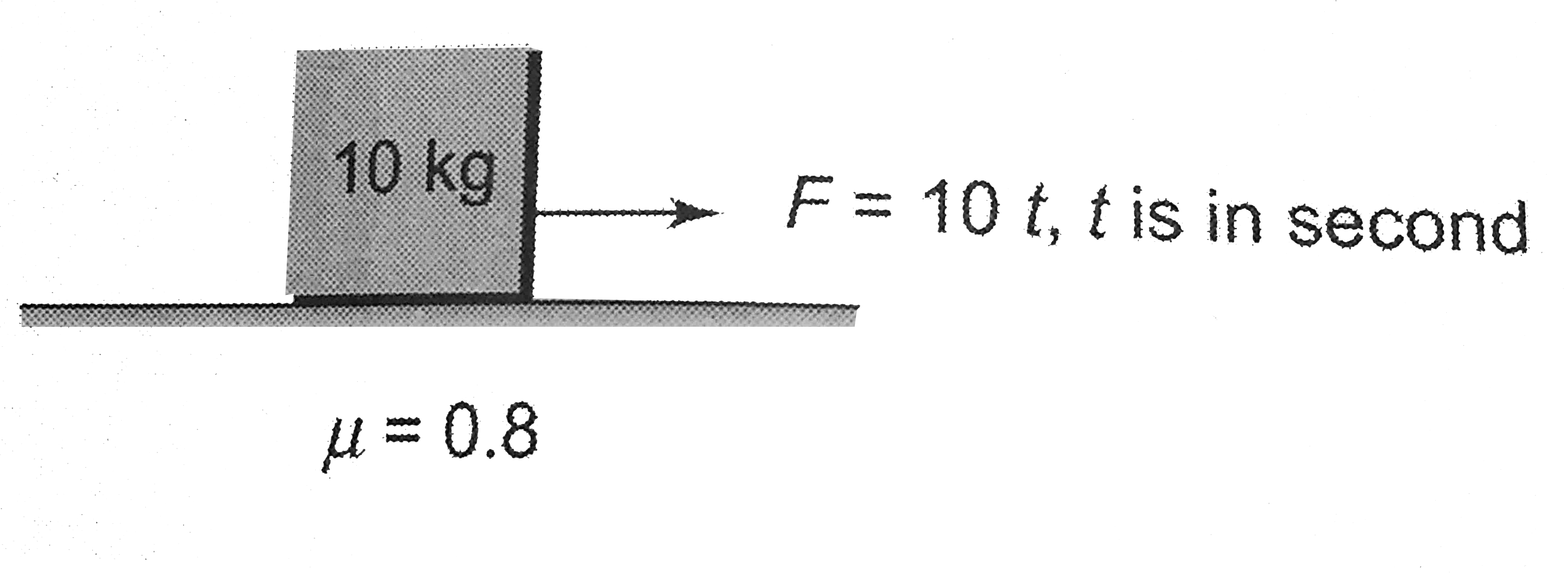
`If (i) `t = 4 s` and (ii) `t = 9 s`20:05View SolutionDescribe motion of the block if `F` is equal to
(a) `20 N` (b) `40 N` (c ) `60 N`
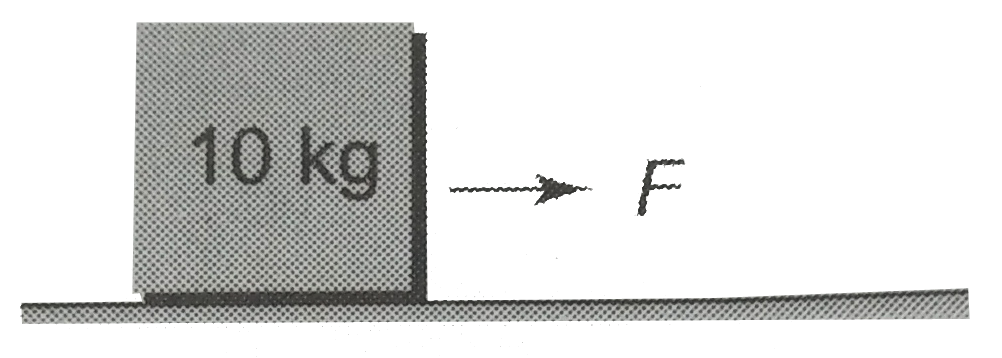 05:45View Solution
05:45View SolutionA homogeneous chain of length `L` lie on a table. If the coefficent of friction is `mu` , find the maximum length `L_(1)` of the chain which can hang from the edge of the table without the chain sliding down.
(b) Consider the situation as shown in the figure. Find teh minimum value of `m` so that the blocks do not move.
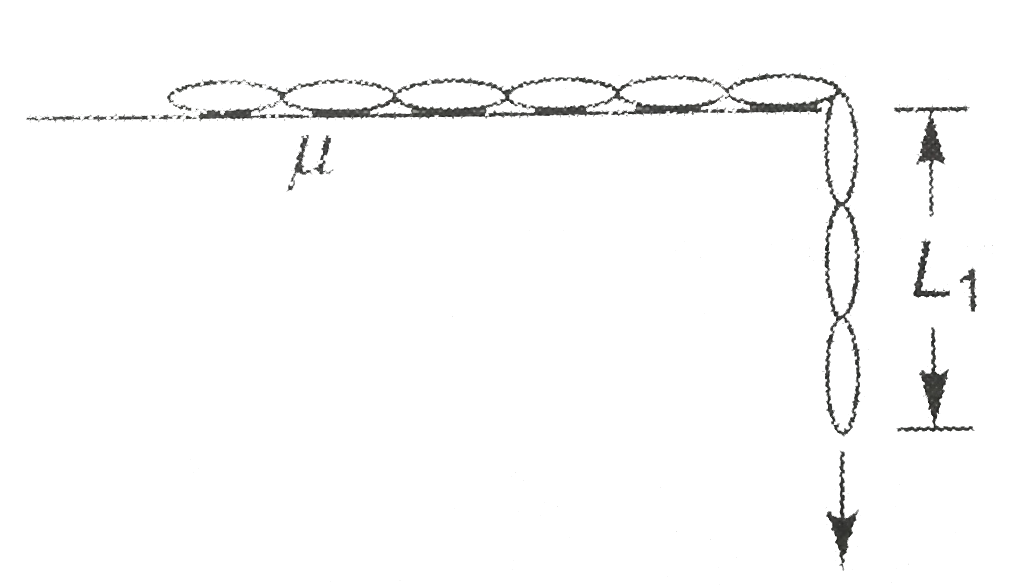
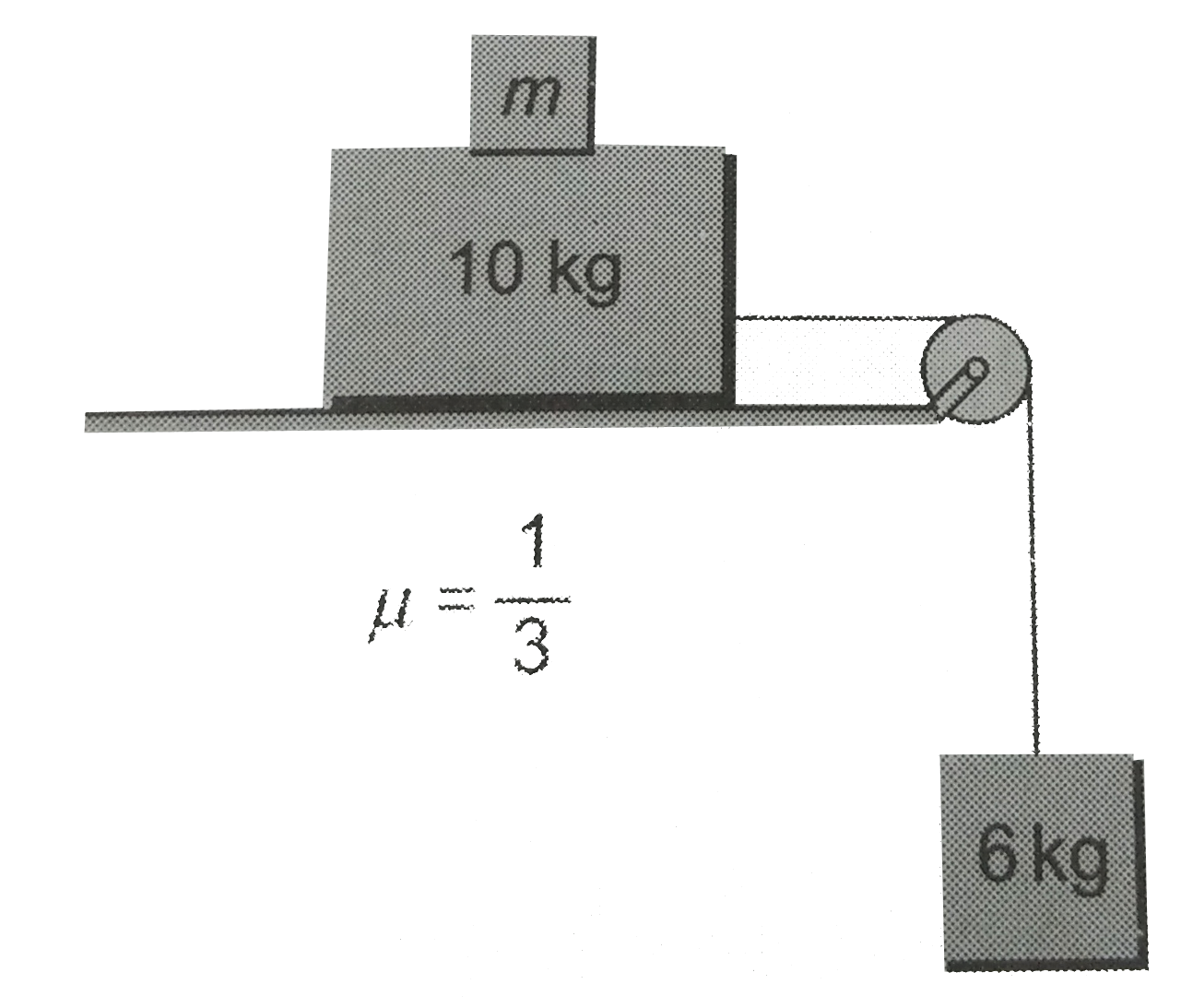 09:51View Solution
09:51View SolutionIf force `F` is gradually increased from zero to `50 N` , tehn (a) find the minimum contact force, (b) find the maximum value of angle of friction when `F = 30 N` , (d) find the angle of friction when the block is moving with constant velocity and ( e) sketch a graph between friction and applied force.
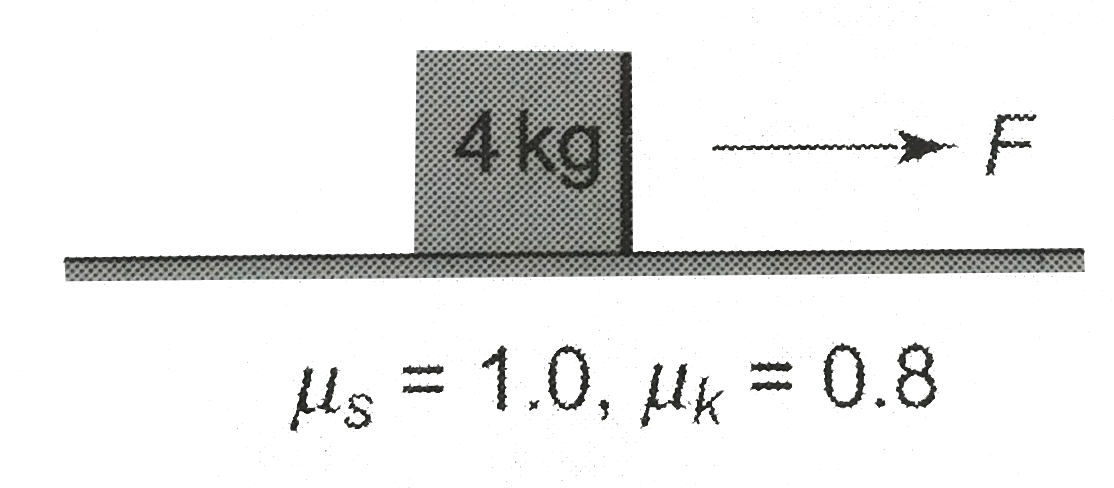 13:57View Solution
13:57View SolutionThe friction coefficient between the board and the floor shown in figure is `mu` Find the maximum force that the man can exert on the rope so that the board does not slip on the floor
 04:59View Solution
04:59View SolutionTwo masses `M_1 and M_2` are connected by a light rod and the system is slipping down a rough incline of angle `theta` with the horizontal. The friction coefficient at both the contacts is `mu`. Find the acceleration of the system, and the force by the rod on one of the blocks.
09:40View SolutionA car starts from rest on a ` 2 - km` long bridge. The coefficient of friction is `0.5`. Find the minimum time to cross the bridge.
03:53View SolutionA lift is moving downwards. A body of mass `2 kg` kept on the floor is pulled horizontally and is in motion. If the coefficient of friction between the body and floor is `1 // 2`, find the friction acting on the body if (a) lift is moving with a uniform velocity and (b) lift is moving with acceleration `5 m//s^(2)` in the downward direction.
03:58View SolutionTwo blocks are in contect moving on an inclined plane of inclination `alpha` with the horizontal. The masses of the blocks are equal to `m_(1)` and `m_(2)` and the coefficients of friction between the inclined plane and the blocks are equal to `mu_(1)` and `mu_(2) (mu_(1) gt mu_(2))` respectively. Find (a) common acceleration of the blocks and (b) the contact force between the blocks.
 12:10View Solution
12:10View SolutionConsider the situation as shown in the figure. If `mu_(1)` is the friction coefficient between block `A` and incline and `mu_(2)` is the friction coefficient between block `B` and incline. Find the acceleration of block `A` if (a) `mu_(1) = (1)/(5) , mu_(2) =(2)/(5)` and (b) `mu_(1) = (2)/(5) , mu_(2) = (1)/(5)`.
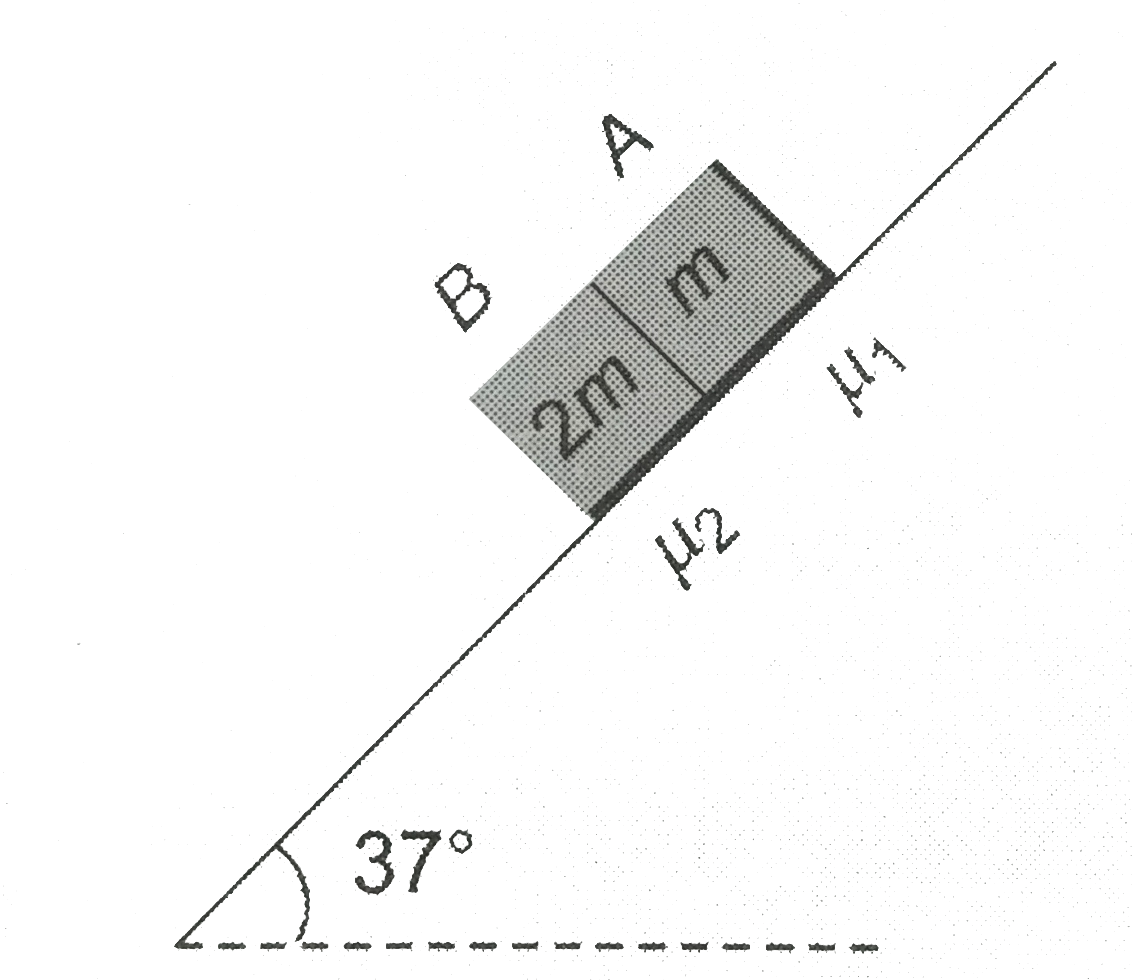 11:23View Solution
11:23View SolutionA Weight `W` can be just supported on a rough inclined plane by a force either acting along the plane or horizontally. The angle of friction is `phi`. Find the angle of inclined plane and applied force.
12:37View SolutionA block of mass `m` rests on a horizontal floor for which coefficient of friction is `mu` . Find the magnitude and the direction of force that should be applied to just move the block so that the applied force is minimum.
12:07View SolutionConsider the situation as shown in the figgure. The coefficent of friction between the blocks is `mu`. Find the acceleration of each block.
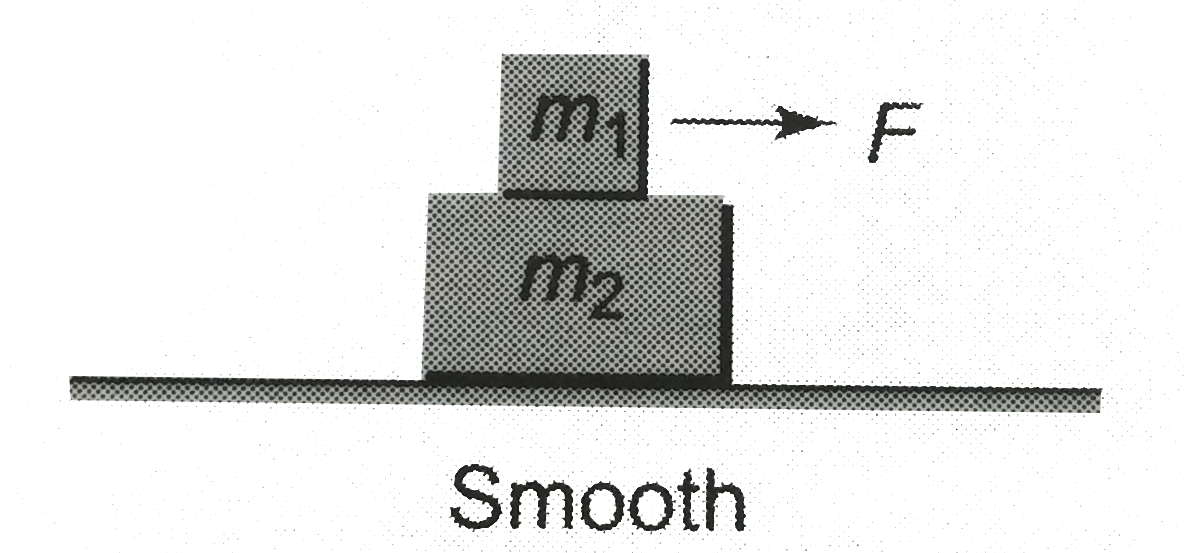 05:06View Solution
05:06View SolutionThe friction coefficient between the blocks is `0.5`. Find the acceleration of each block if `F` is equal to (a) `5 N` and (b) `20 N`.
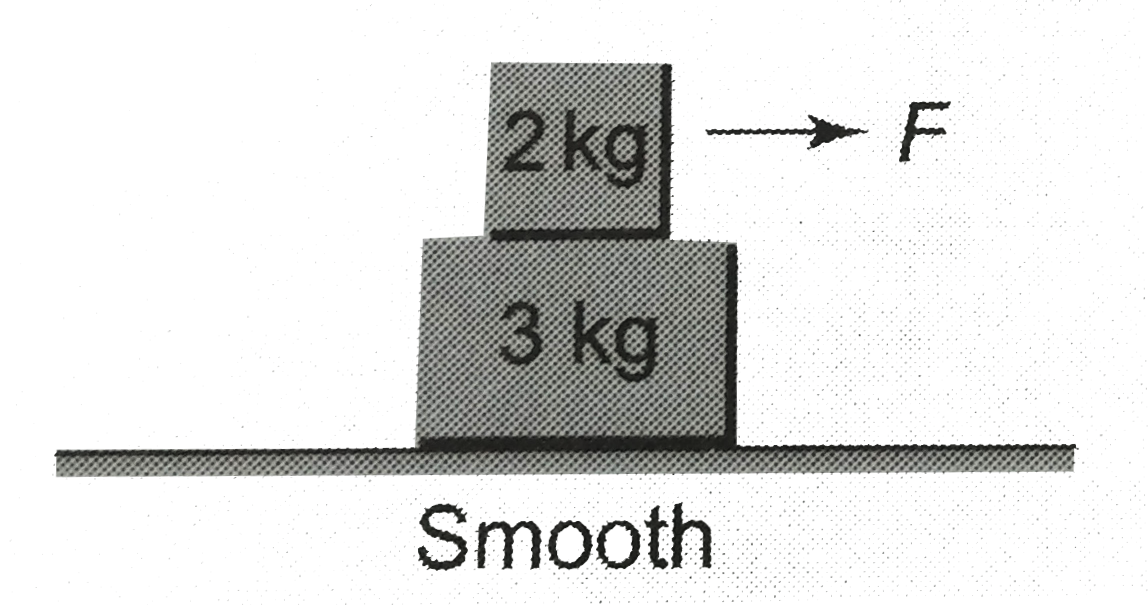 04:31View Solution
04:31View SolutionThe friction coefficient between the blocks is `mu`. Sketch a graph showing variation of acceleration of the blocks will move separately.
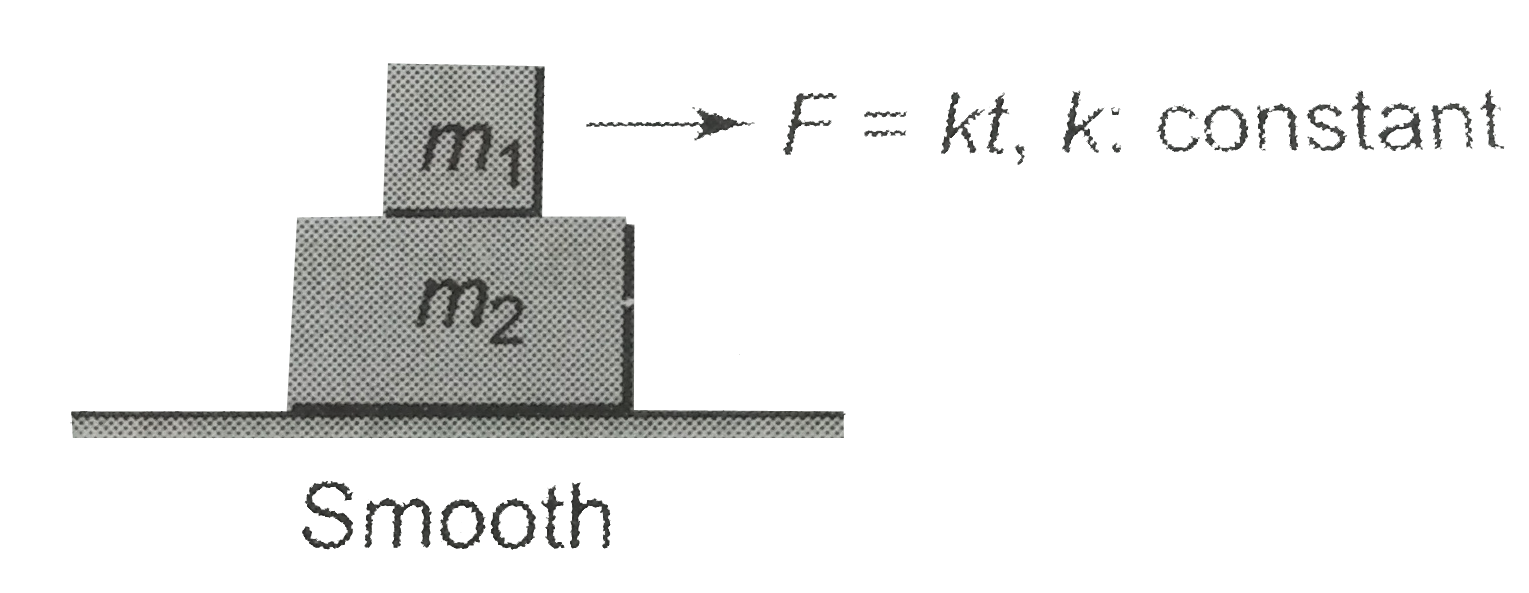 07:31View Solution
07:31View SolutionIf the friction coefficient between the blocks are `mu_(s) = 0.52` and `mu_(k) = 0.50` , in how much time , the upper block will lose contact with the lower block.
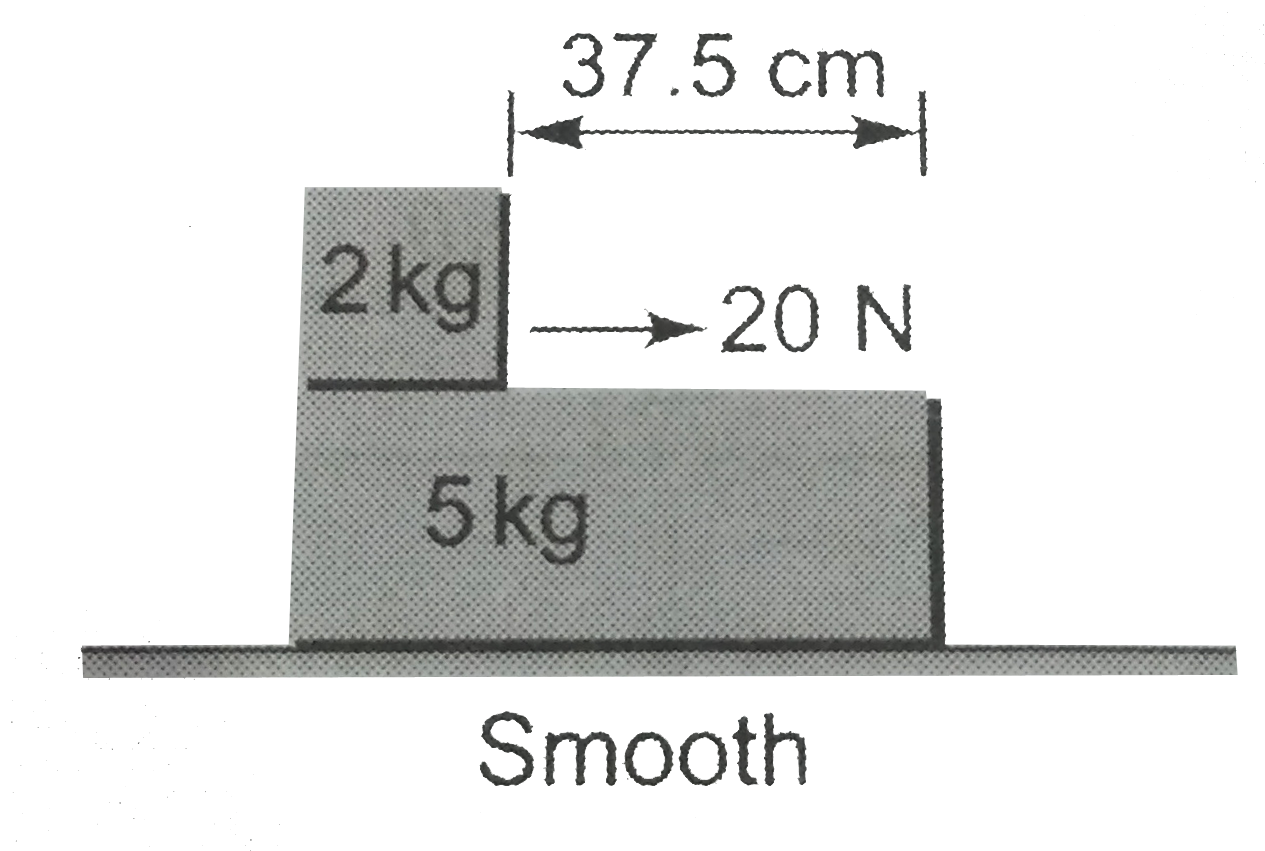 07:15View Solution
07:15View SolutionThe friction coefficient between the blocks is `mu`. If force `F` is applied on the lower block , analyse motion of two blocks.
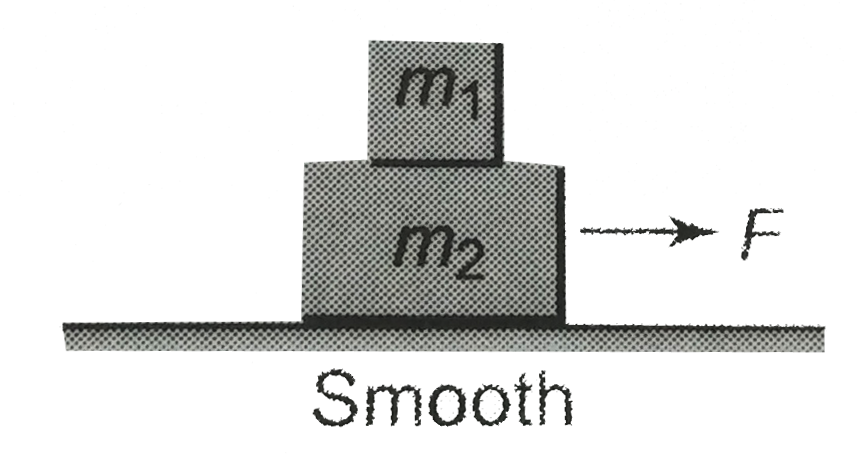 08:29View Solution
08:29View SolutionThe coefficient of friction between the blocks is `0.5`. Find the acceleration of each block if `F is (a) 21 N ,(b) `35 N` and (c ) `40 N`.
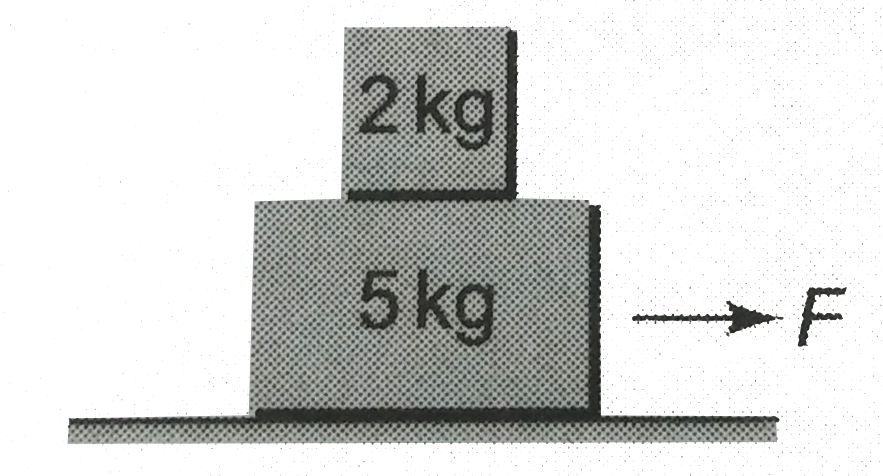 06:13View Solution
06:13View SolutionThe coefficient of friction between the blocks are `mu_(s) = 0.3` and `mu_(k) = 0.2`. (a) Find the maximum value of `F` so that the blocks move together. (b) If force `F` is twice the value found in `(a)`, find the acceleration of each block.
 07:41View Solution
07:41View SolutionA block of mass `2 kg` is placed on a truck as shown in the figure. The coefficient of friction between the block and surface is `0.5`. The truck starts from the rest and moves with acceleration `a_(0)`. (a) Find the friction force acting on the block if (i) `a_(0) = 2 m//s^(2)` , (ii) `4 m//s^(2)` , (iii) `6 m//s^(2)` and (b) if acceleration of truck `a_(0) = 8 m//s^(2)`. After how much time the blocks falls off the truck and the distance travelled by the truck in this time.
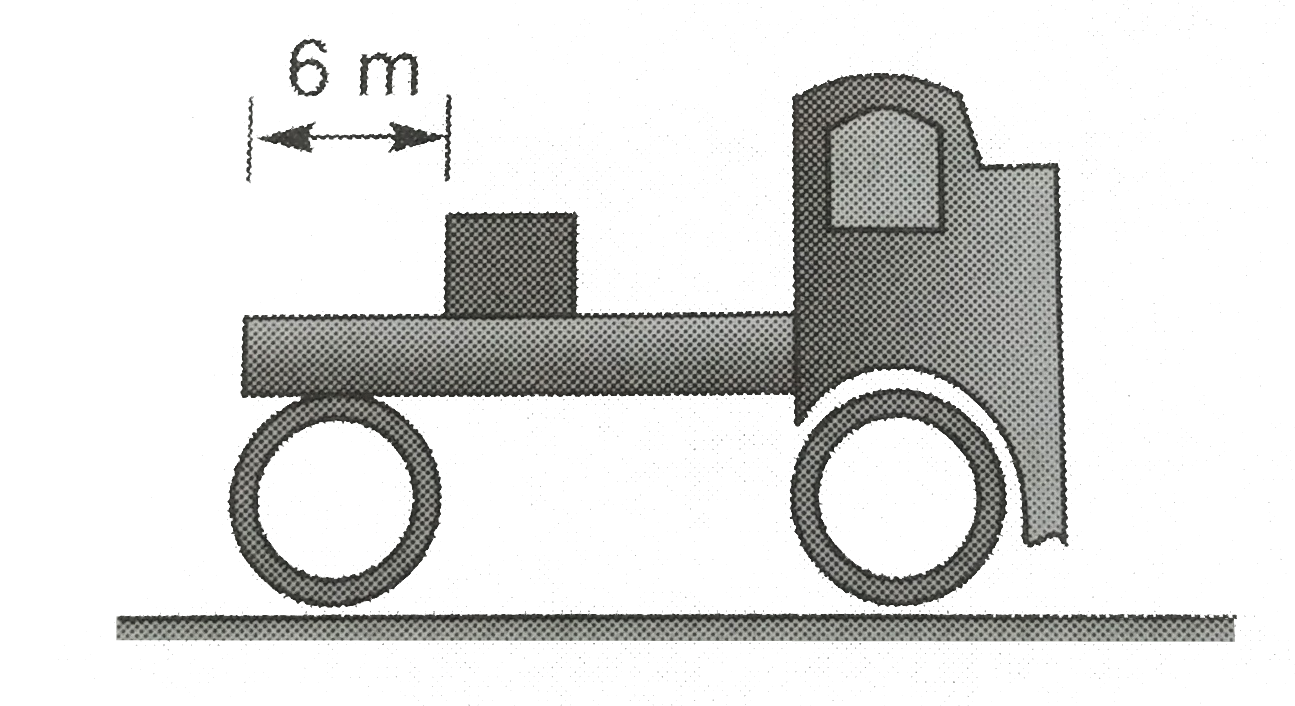 08:21View Solution
08:21View SolutionConsider the situation as shown in the figure. The coefficient of the friction is `0.5` for all surfaces.
(a) In figure (i) , if `F = 15 N` , find the friction force acting on the upper block.
(b) In figure (ii) , find the minimum value of `F` to move the lower block. The upper block is connected to a rod and held at rest. Find the force applied by rod on the upper block.
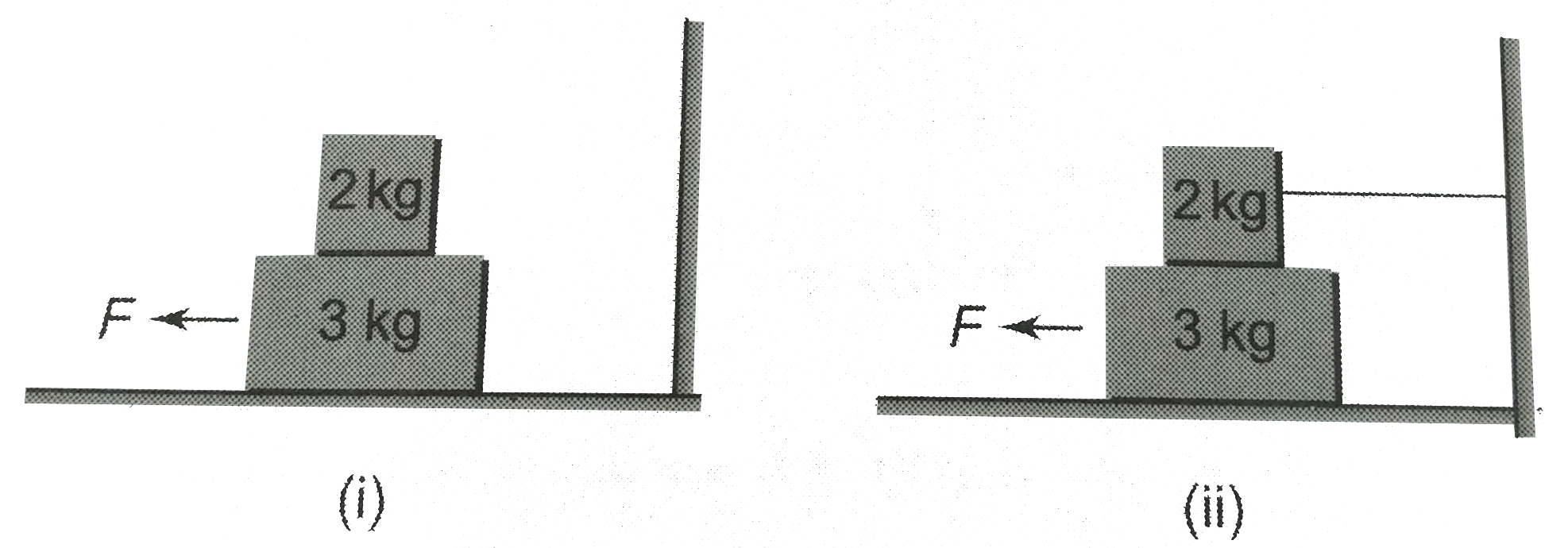 07:03View Solution
07:03View SolutionFind the minimum value of `F` to move the lower block between the upper block and the surface . Also, find acceleratuion of each block.
 07:37View Solution
07:37View SolutionFind the minimum value of `F` and the tension in the string so that the blocks move with constant velocity. The coefficient of friction at all surfaces is `mu`.
(a)
(b)
( c )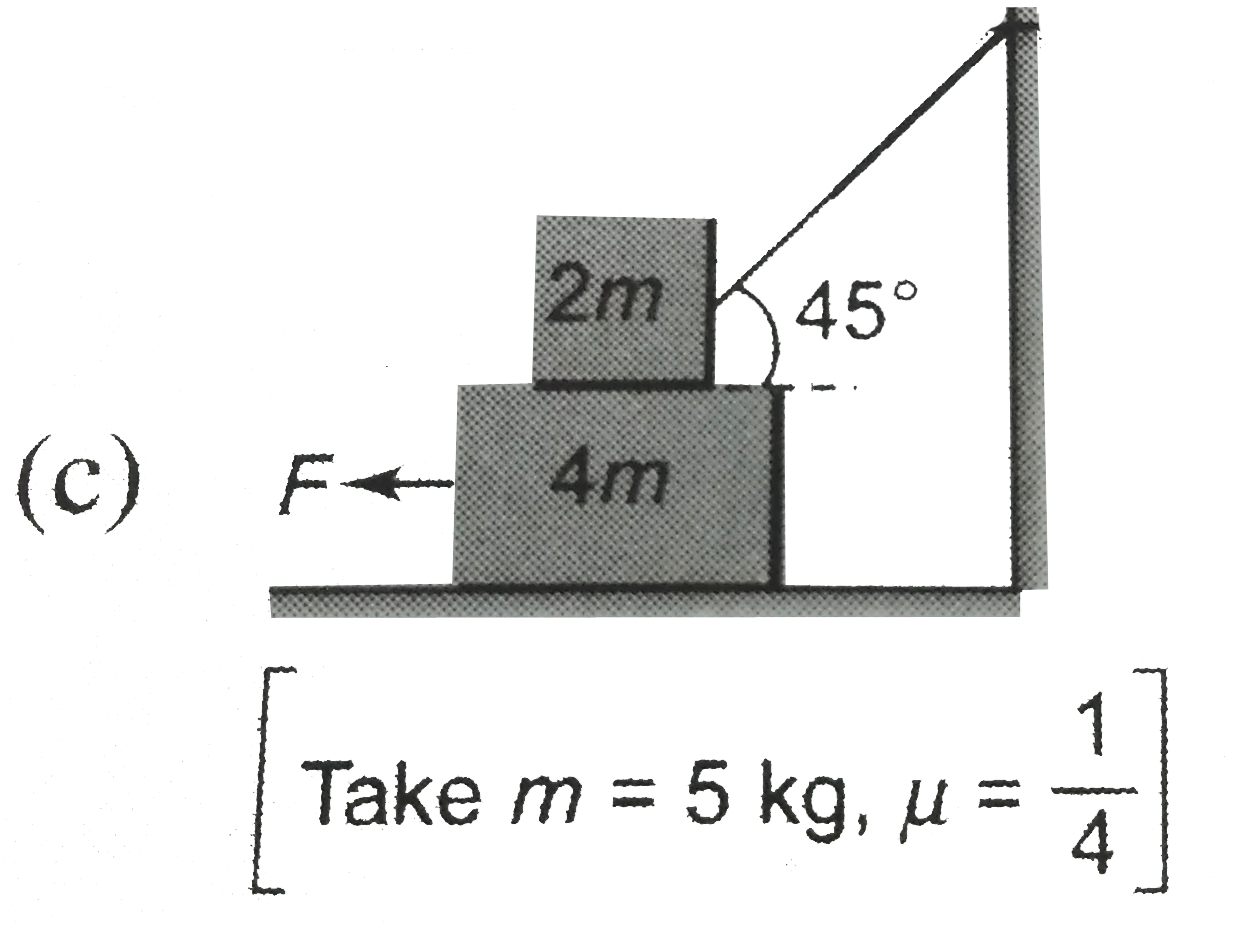
(d)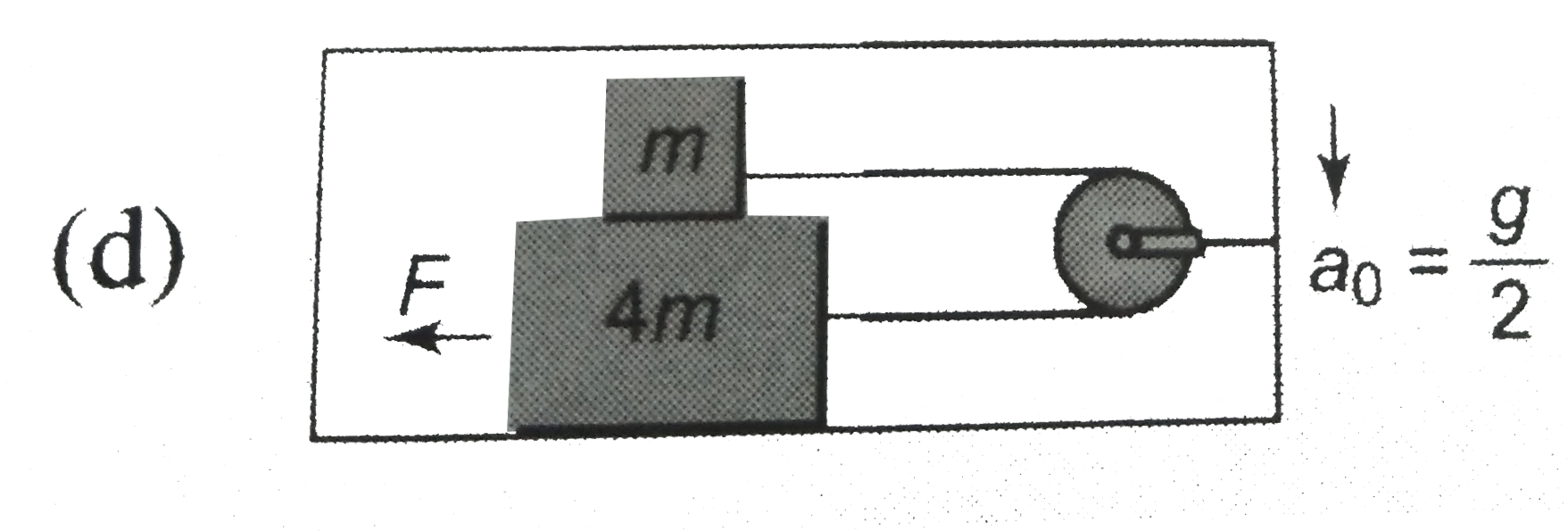 28:31View Solution
28:31View SolutionBoth the blocks are given same velocity towards right. In how much time , the smaller block will separate from the large block.
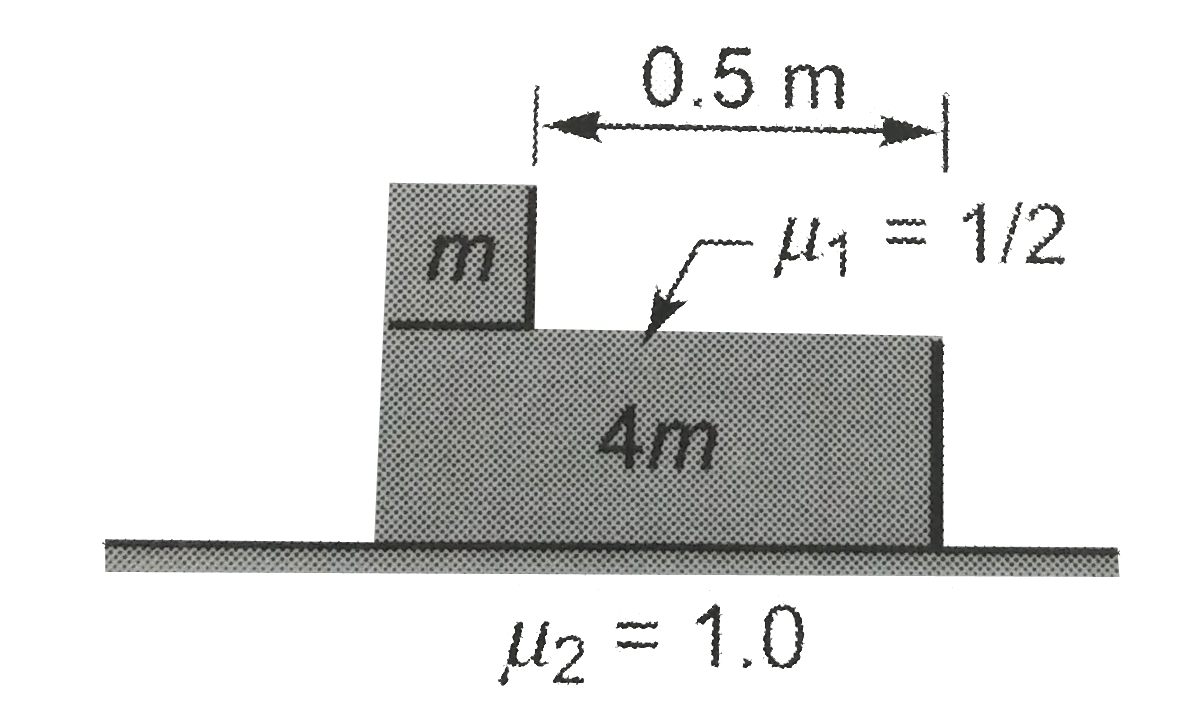 09:44View Solution
09:44View SolutionA block of mass `m` is supported on a rough wall by applying a force in figure Coefficient of static friction between block and wall is `mu`
For what range of value of `p` , the block remain in static equilibrium ?
 03:46View Solution
03:46View SolutionA block is placed on an inclined plane whose angle of inclination is greater than the angle of repose. If the coefficient of friction is `mu` (a) find force `P` applied parallel to incline that will keep it in equilibrium (minimum and maximum value of force). (b) Find the range of `P` if it is applied horizontally on the block. ( c) What is the minimum value of `P` if it is applied perpendicular to the inclined plane?
View SolutionConsider the situation shown in the figure . The coefficient of friction between the blocks is `mu`. Find the minimum and the maximum force `F` that can be applied so that two blocks move together.
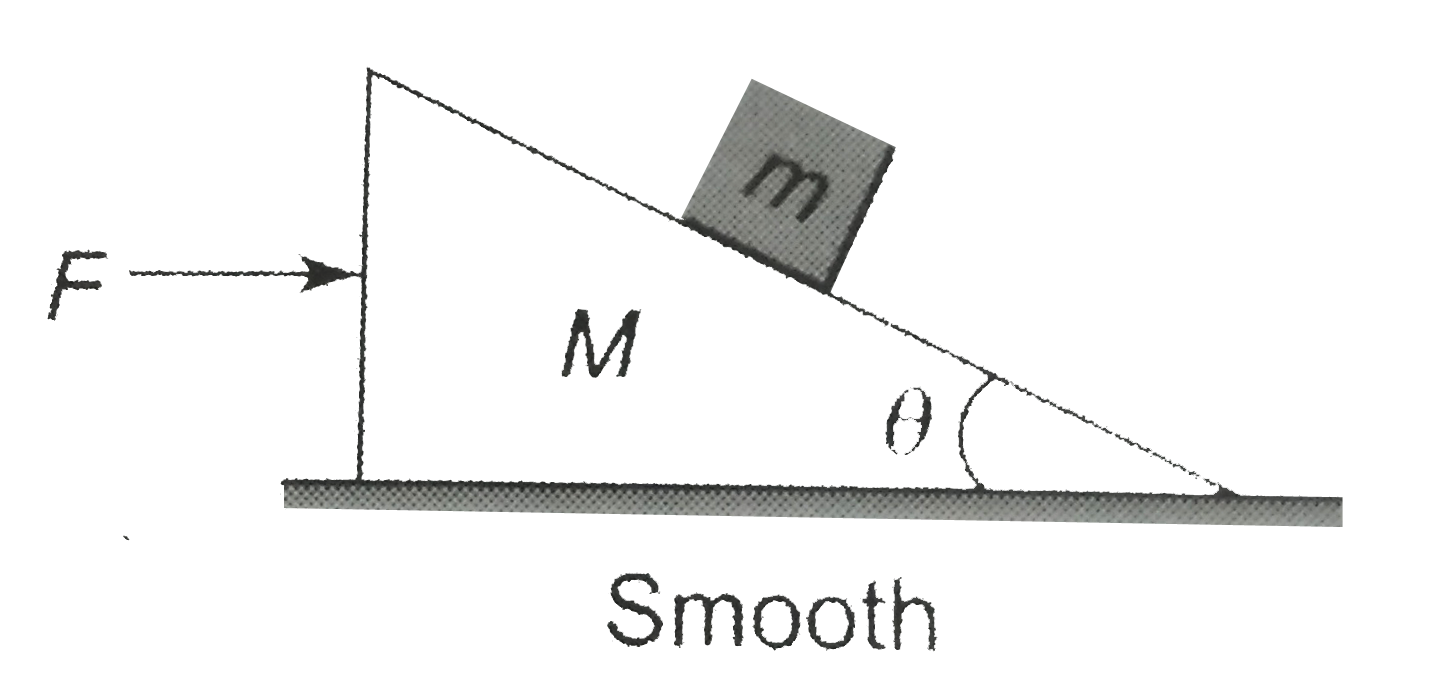 13:22View Solution
13:22View SolutionFind the acceleration and tension in the string in the following cases . The pulley and string are massless.
(a)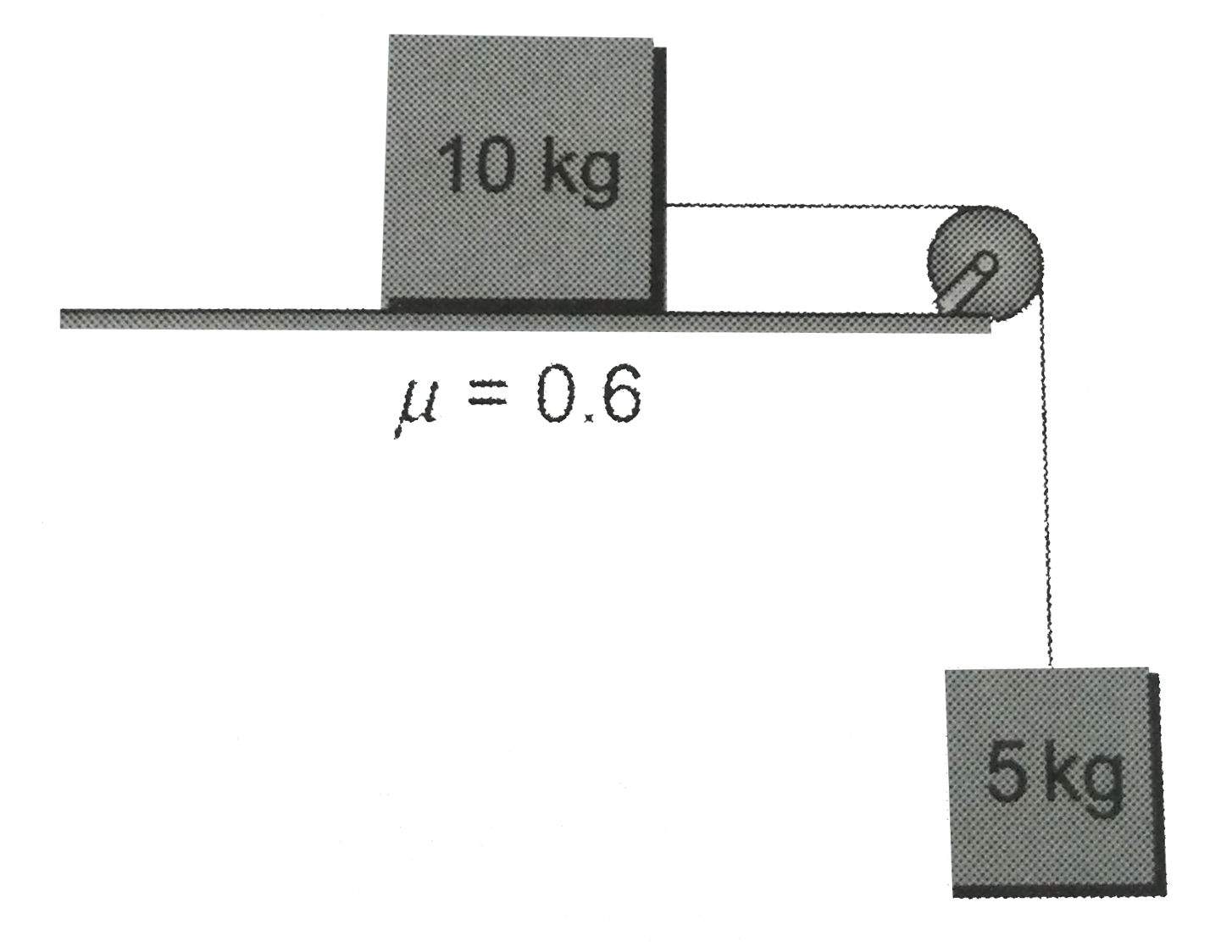
(b) View Solution
View SolutionConsider the situation as shown in the figure. Find the maximum value of `m_(1)//m_(2)` so that the system remains at rest. What will happen if `tan theta lt mu`?
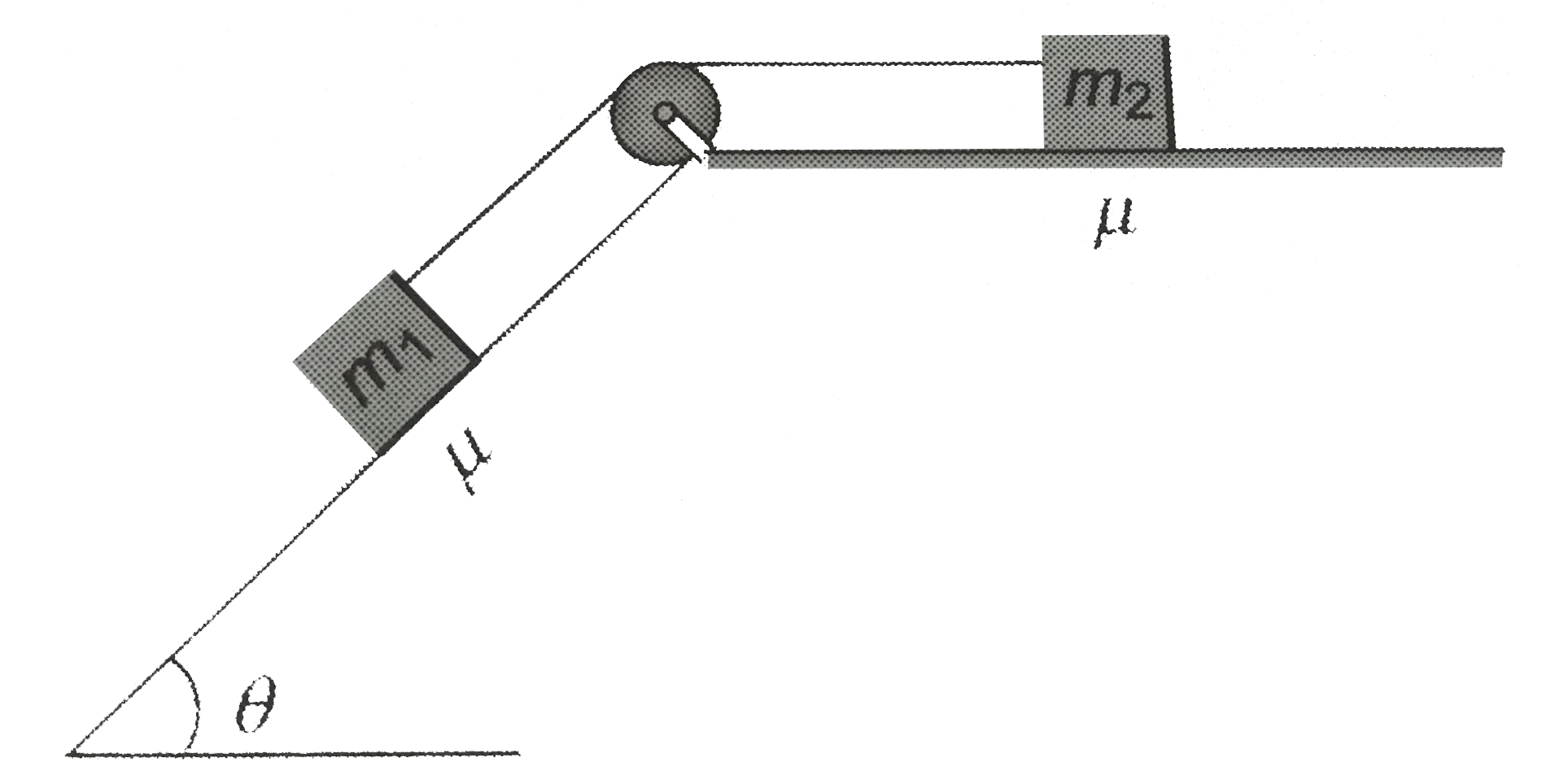 View Solution
View SolutionConsider the situation as shown in the figure . The masses of pulley and the threads , as well as the friction in the pulley , are negligible. Assuming both bodies to be motionless at the initial moment. Find the mass ratio `m_(1)//m_(2)` at which the body `m_(2)`
(a) starts coming down
(b) starts going up
( c) is at rest
 View Solution
View SolutionA block of mass `8 kg` is kept on a rough floor. The coefficients of friction are `mu_(s) = 0.5` and `mu_(k) = 0.4`. Force `F_(1) = 15 N` and `F_(2) = 20 N` are applied on the block as shown.
(a) Find the magnitude and the direction of friction force .
(b) If `F_(1) = 30 N , F_(2) = 40 N`, find the acceleration of the block.
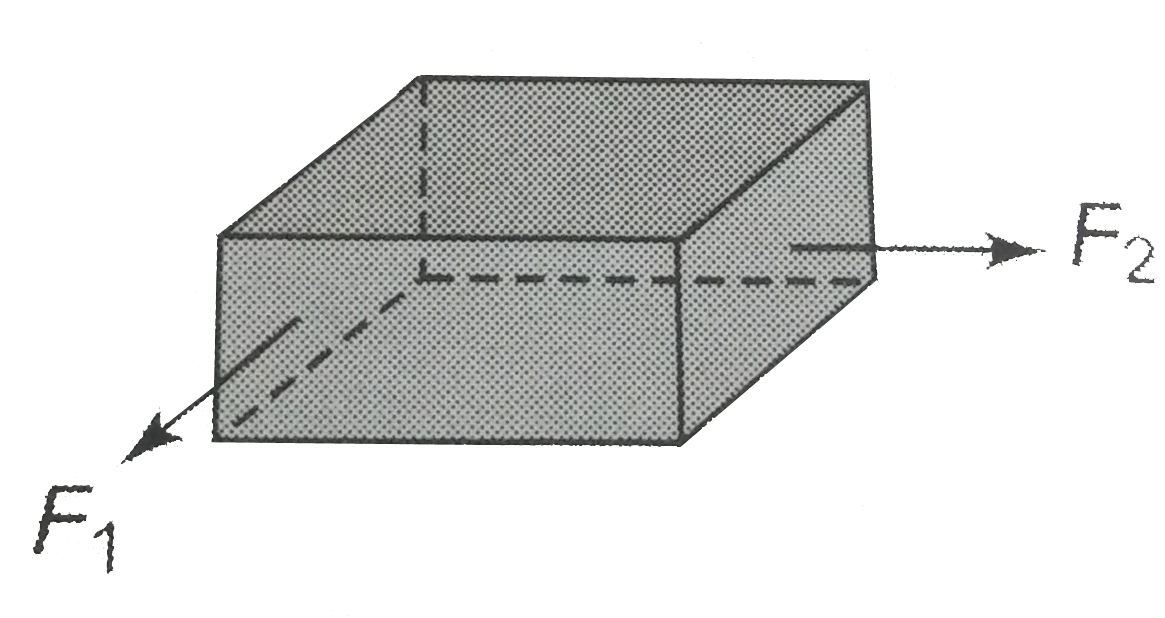 09:14View Solution
09:14View SolutionA block of mass ` 4 kg` is pushed against a rough vertical wall with a force `80 N` is applied on the block in a direction parallel to the wall . Will the block move? If yes , what is acceleration of the block ?
View SolutionA cubical block of mass `m` is sliding on an inclined right angle trough as shown in the figure. If coefficient of friction is `mu` , find the acceleration of the block.
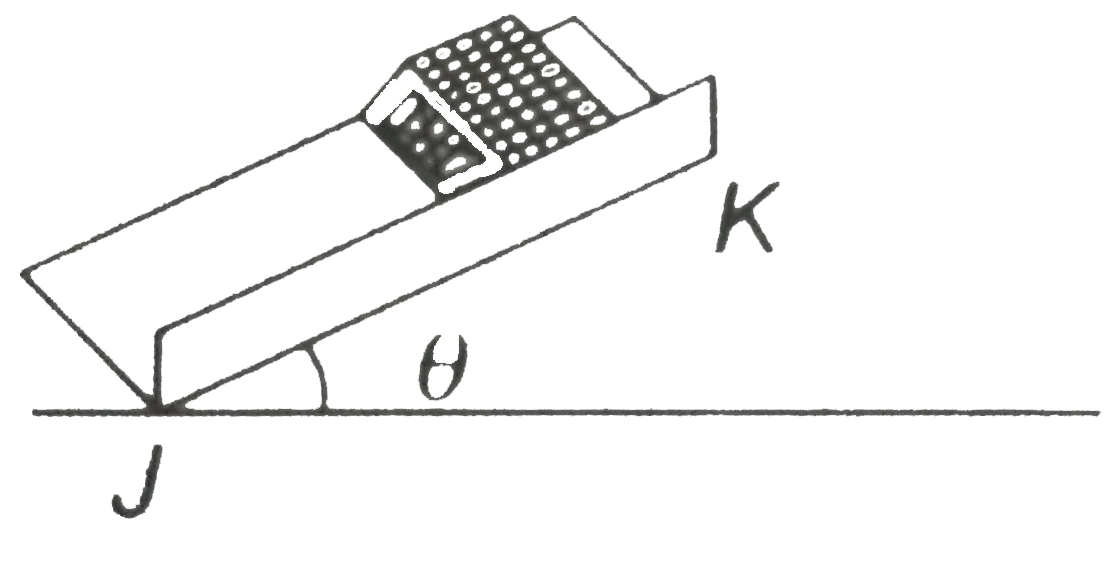 View Solution
View SolutionIn the arrangement shown in figure the masses of the wedge `M` and the body `m` are known. The appreciable friction exists only between the wedge and the body `m`, the friction coefficient being equal to `k`. The masses of the pulley and the thread are negligible. Find the acceleration of the body `m` relative to the horizontal surface on which the wedge slides.
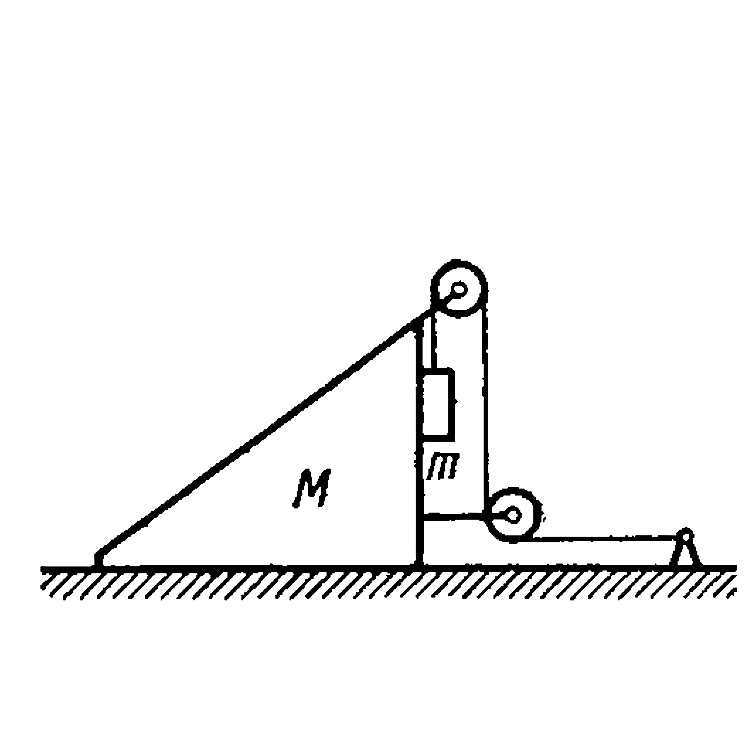 12:12View Solution
12:12View SolutionA block sliding down on an inclined plane forms an angle `theta` with the horizontal. The friction coefficient depends on the distance `x` covered as `mu = kx` , where `k` is a constant. Find the distance covered by the block till it stops and its maximum velocity over this distance. Also , sketch a graph between square of velocity and distance covered `x`.
13:59View Solution
Example questions and complete solutions for chapter FRICTION of CP SINGH PHYSICS (HINGLISH) of Class 11
